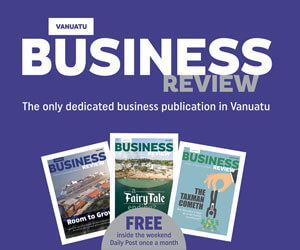Vanuatu Gov’t injects USD3.3M into AVOL; BRED Bank the only beneficiary
August 24, 2024 8:15 am | Posted in Business News | Share now TwitterFacebook
By Doddy Morris.

The Liquidators of Air Vanuatu Operations Limited (AVOL) Ernst & Young (EY), presented a report to the creditors of AVOL this week, revealing the Vanuatu Government will inject USD3.3 million in to AV3.
The purpose of the report was to provide creditors with details of a creditors compromise proposal for the recapitalization of the Company. EY presented 2 scenarios to the creditors; A Creditors Compromise Proposal and Wind down and piecemeal asset sale.
It is said that when a company enters liquidation, the order of priority for payments to creditors is important as it determines who gets paid first from the company’s remaining assets. The general order of priority is as follows: Liquidation Costs, Secured Creditors, Priority Unsecured Creditors.
Unsecured creditors and shareholders
Firstly, with the Liquidation Costs, the first payments go to EY who are the liquidator for their fees and expenses incurred during the liquidation process. This includes ALL costs associated with managing the liquidation, selling assets, and distributing payments to creditors.
Secondly, with the Secured Creditors, these creditors have a legal claim over specific assets of the company, often backed by collateral such as property or equipment. BRED Bank are the secured creditor. They are next in line to be paid, as they can recover their debts by taking possession of the secured assets.
Thirdly, with the Priority Unsecured Creditors, this category typically includes employees owed wages, holiday pay, severance pay and certain statutory entitlements. These creditors are prioritized over other unsecured creditors due to their special status.
Fourthly, with Unsecured Creditors, these creditors do not have any collateral backing their claims. They include suppliers, contractors, and customers. Unsecured creditors are paid after secured and priority unsecured creditors, and they may receive a dividend if there are remaining funds after higher-priority claims have been satisfied.
Lastly with the shareholders, if there are any remaining assets after all creditors have been paid, shareholders (both preferred and common) will receive any distributions. However, it is common for shareholders to receive little to nothing in liquidation scenarios.
In the EY report scenario 1 estimates that creditors stood a higher chance of recovering some of the funds owed under the Creditors Compromise proposal. Under the Wind Down scenario, it was unlikely for any unsecured creditors to receive any money and for secured creditors to only receive partial proceeds.
The creditors’ compromised proposal, which includes a Vanuatu Government injection of USD 3.3 million, is summarized as follows: The assets of AVOL would be transferred to a new entity (AV3).
The Vanuatu Government will inject USD 3.3 million into AV3, assume the VNPF debt, and write off its own debt.
The BRED debt will be retained, secured by a government guarantee, and continue to be serviced by the company post-creditor compromise.
Partially secured creditors and priority creditors will remain with the company after the compromise.
Employees’ entitlements will receive 50% of the amount owing, and unsecured creditors are estimated to receive 5 cents on the dollar once the proposal is implemented.
The total liabilities of AVOL include several categories: Secured creditors, such as BRED, amount to USD 10.6 million; partially secured creditors total USD 2.9 million; priority creditors are owed USD 4.2 million; the VNPF liability stands at USD 9.2 million; the Vanuatu Government’s liability is USD 45.3 million; and other unsecured creditors are owed USD 111.5 million.
The only winner here is BRED Bank. Their asset is 100% secured by the Vanuatu Government, and they will continue to have their loans serviced, while everyone one else are losers.










